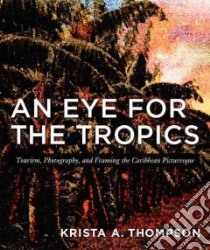An Eye for the Tropics - 9780822337645
Un libro in lingua di Thompson Krista A. edito da Duke Univ Pr, 2007
- € 29.40
- Il prezzo è variabile in funzione del cambio della valuta d’origine
Illustrated with more than one hundred images, including many in color, An Eye for the Tropics is a nuanced evaluation of the aesthetics of the “tropicalizing images” and their effects on Jamaica and the Bahamas. Thompson describes how representations created to project an image to the outside world altered everyday life on the islands. Hoteliers imported tropical plants to make the islands look more like the images. Many prominent tourist-oriented spaces, including hotels and famous beaches, became off-limits to the islands' black populations, who were encouraged to act like the disciplined, loyal colonial subjects depicted in the pictures.
Analyzing the work of specific photographers and artists who created tropical representations of Jamaica and the Bahamas between the 1880s and the 1930s, Thompson shows how their images differ from the English picturesque landscape tradition. Turning to the present, she examines how tropicalizing images are deconstructed in works by contemporary artists—including Christopher Cozier, David Bailey, and Irénée Shaw—at the same time that they remain a staple of postcolonial governments' vigorous efforts to attract tourists.
Informazioni bibliografiche
- Titolo del Libro in lingua: An Eye for the Tropics
- Sottotitolo: Tourism, Photography, And Framing the Caribbean Picturesque
- Lingua: English
- Autore: Thompson Krista A.
- Editore: Duke Univ Pr
- Collana: Duke Univ Pr (Paperback)
- Data di Pubblicazione: 15 Febbraio '07
- Genere: ART
- Argomenti : Tourism Caribbean Area Tourism in art Travel photography Caribbean Area
- Pagine: 366
- Dimensioni mm: 209 x 177 x 25
- ISBN-10: 0822337649
- EAN-13: 9780822337645


